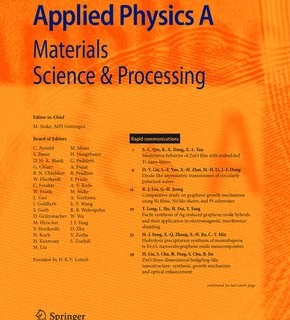A composite photonic structure with periodic array of SiO2 particles for solar cell radiative cooling
Abstract
Transparent radiative cooling is an effective passive cooling strategy that utilizes the vibrational contractions of molecular bonds in certain polymers to emit corresponding wavelengths of electromagnetic waves into outer space. This performance can be further improved by incorporating particles. However, balancing the negative gain in transmittance resulting from particle presence remains a challenge. Here, we designed a photonic structured radiative cooler that achieves high transparency and excellent emissivity for zero-energy thermal management of silicon solar cells by embedding periodically arranged SiO2 particles within a PMMA matrix. Theoretical studies indicate that a configuration of 100 µm thick PMMA, SiO2 particles with a radius of 0.5 µm, and a volume fraction of 8% achieves optimal performance. Further optimization of the embedding method revealed that an orderly arranged PMMA/SiO2 radiative cooler exhibits superior emissivity (93.61%) and transmittance (93.31%) compared to a randomly arranged counterpart. Theoretical analysis indicates that this configuration can effectively reduce the temperature of silicon solar cells by 2.64 °C. Additionally, it enhances the external quantum efficiency (EQE) by 5.2%, improves the short-circuit current density by 5.3%, and mitigates efficiency losses by 1.19% compared to conventional glass-covered cells. This strategy of embedding periodic arranged SiO2 particles in PMMA films is expected to significantly advance the development of transparent radiative cooling devices.

 求助内容:
求助内容: 应助结果提醒方式:
应助结果提醒方式:


